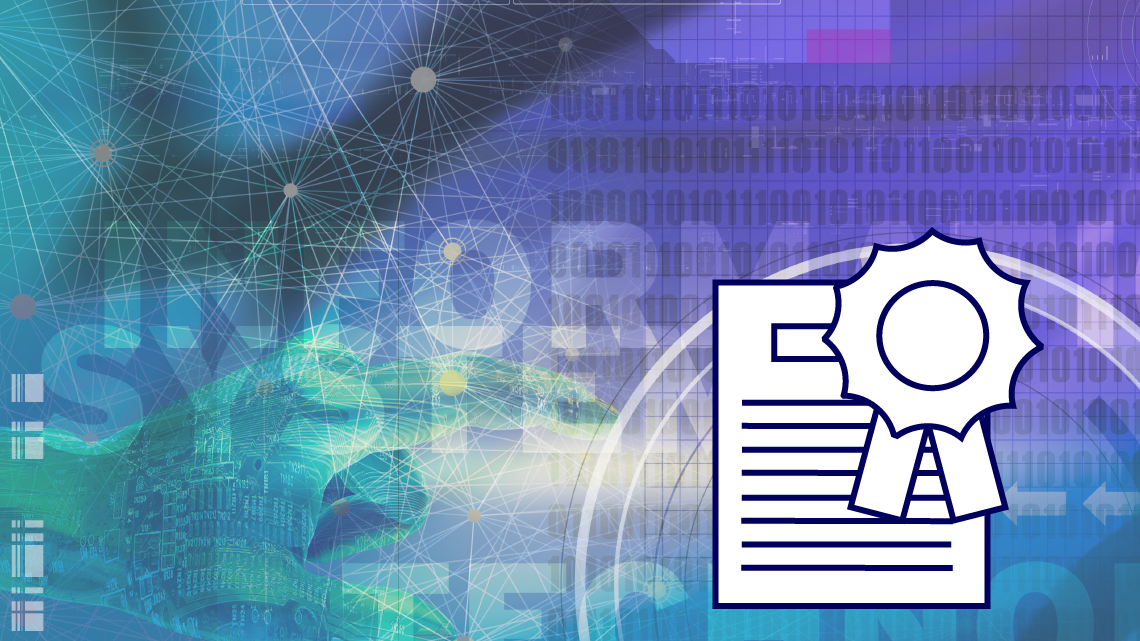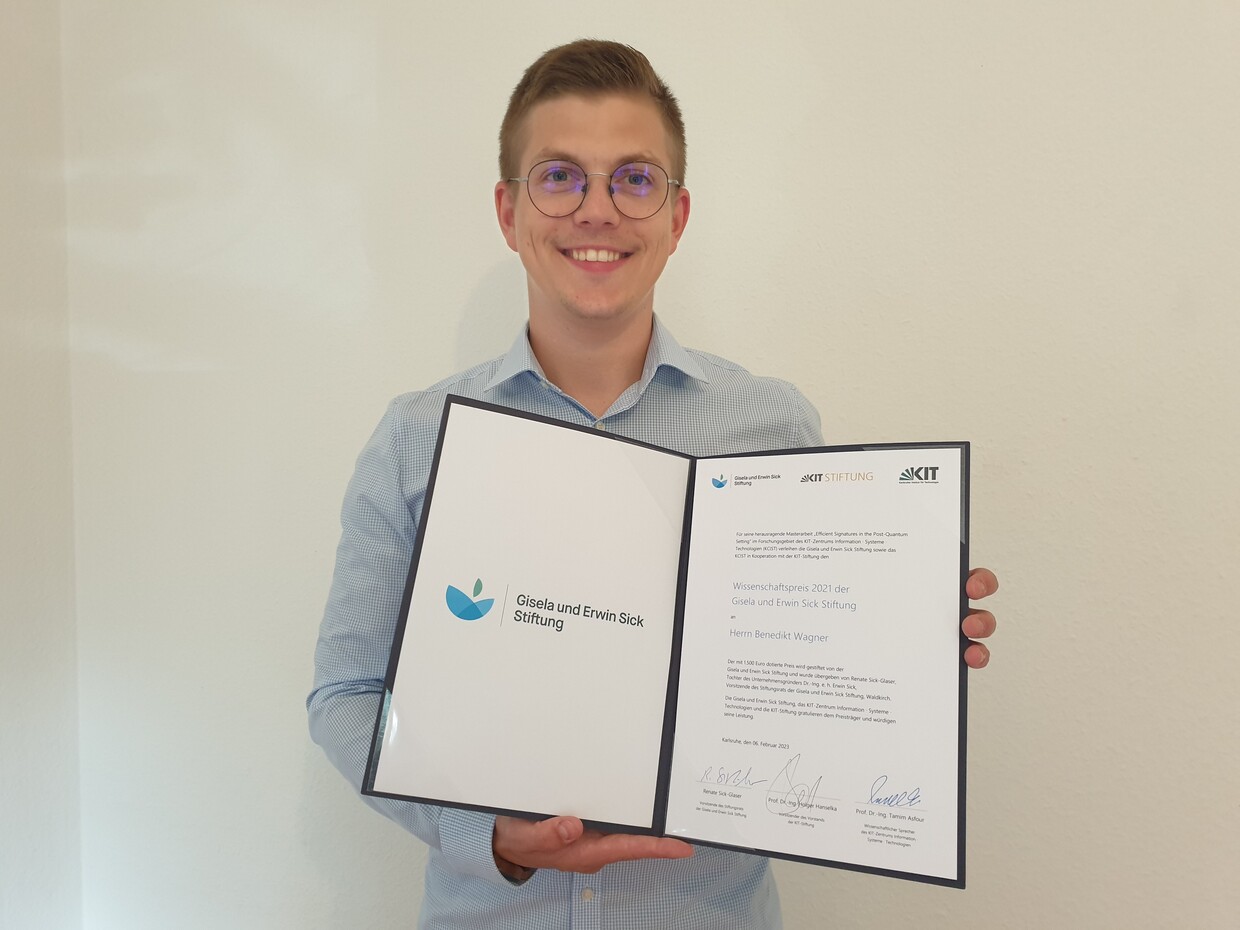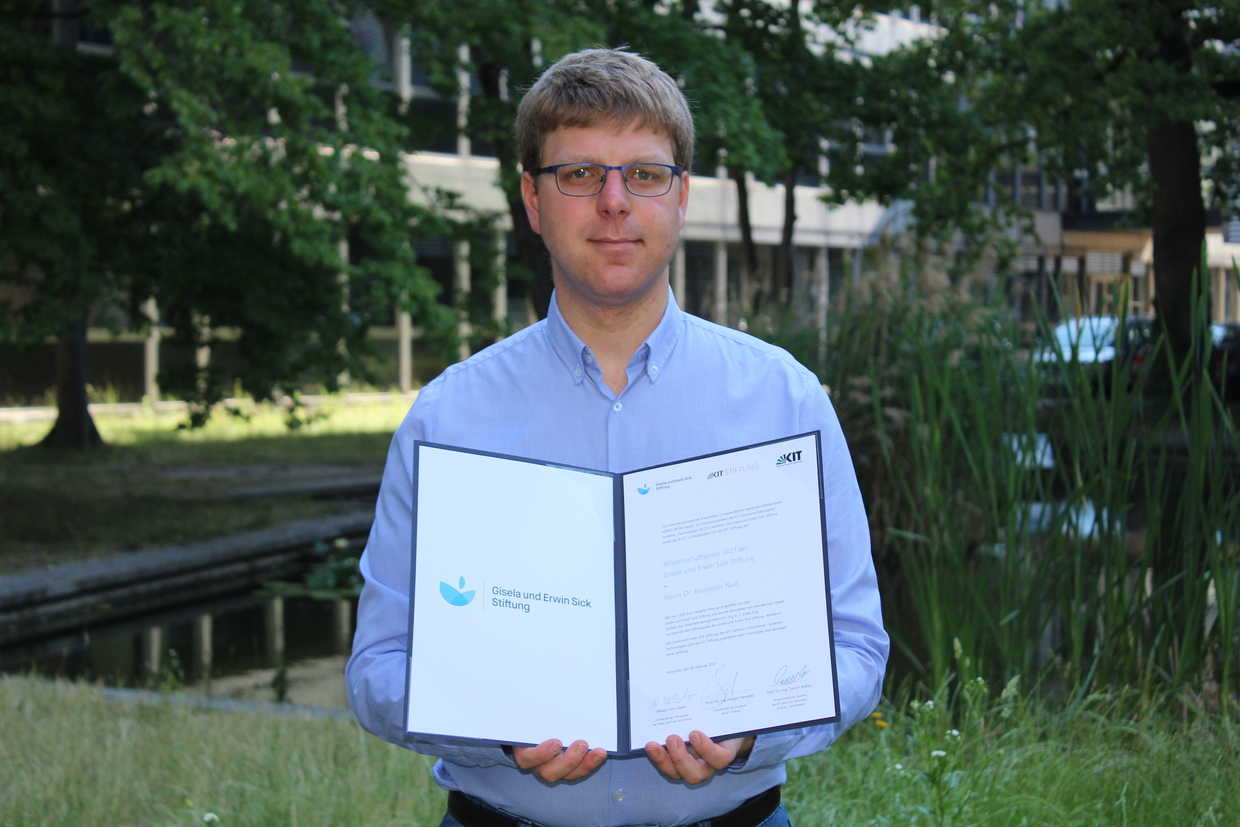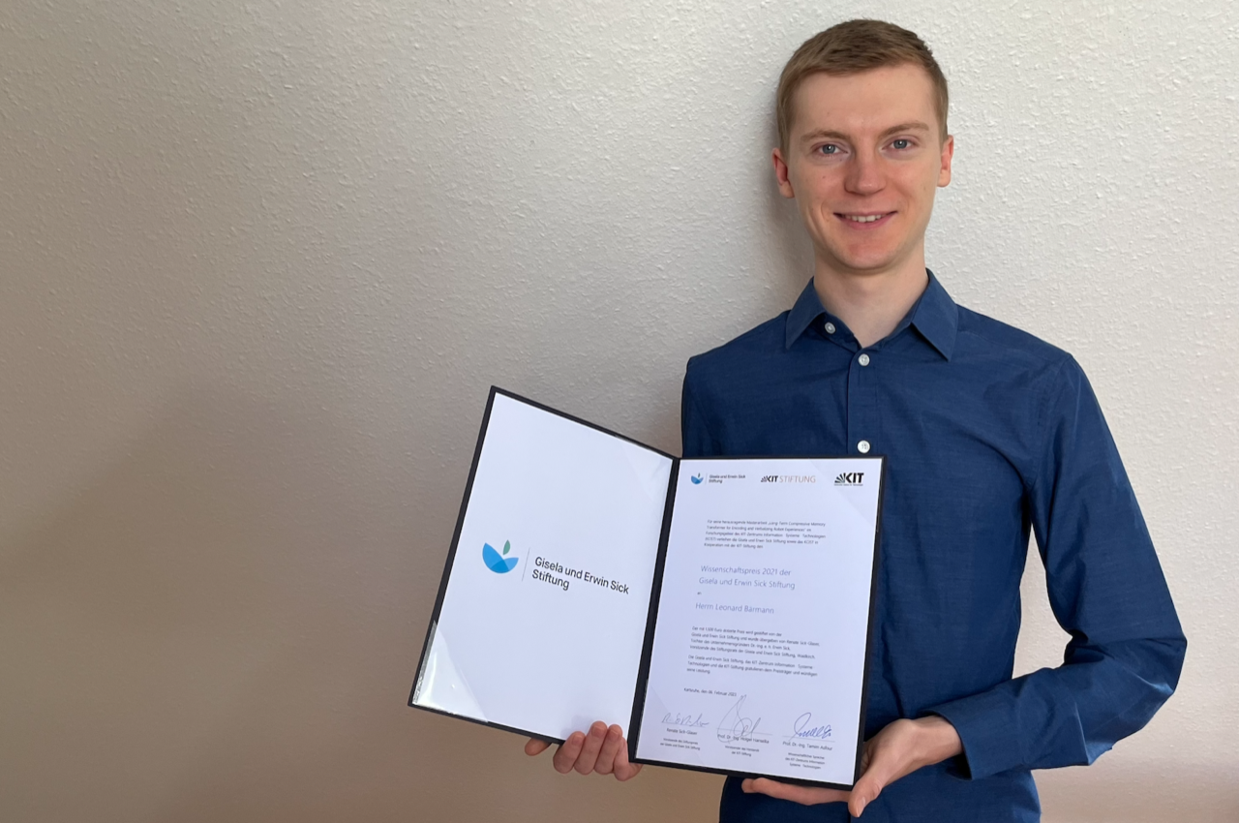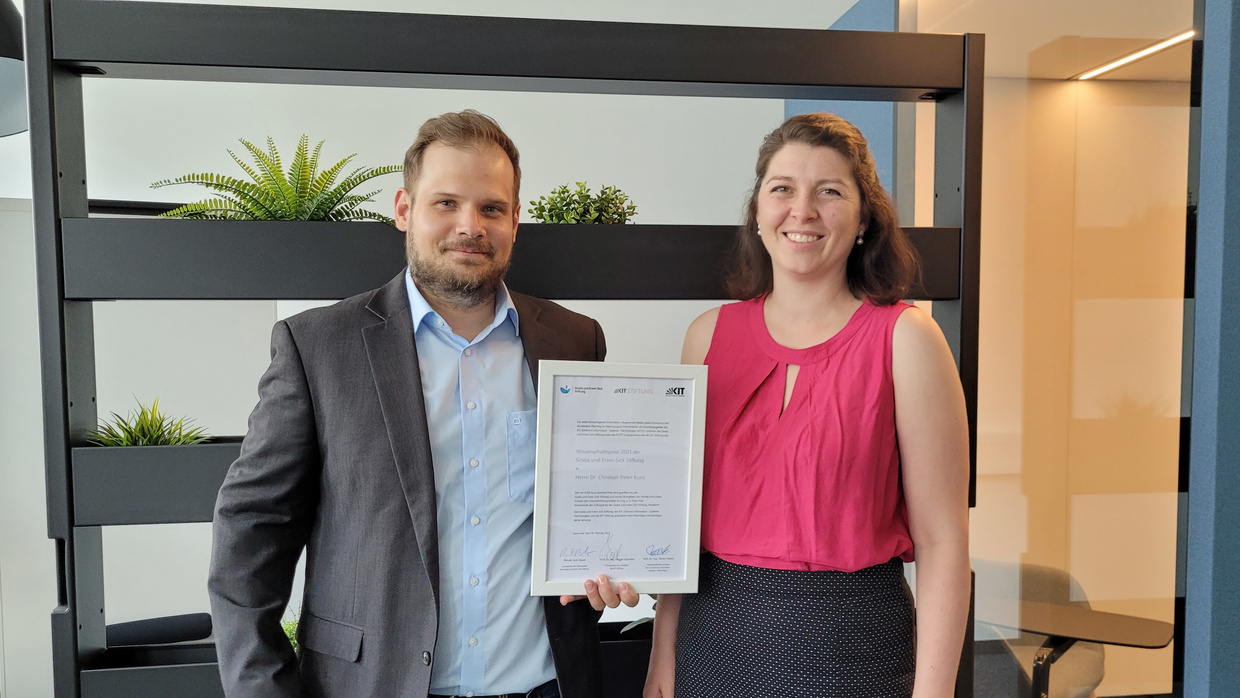The Science Award of the Gisela and Erwin Sick Foundation, honours both fundamental and application-oriented research in the KCIST research area. The prize for the best dissertation is endowed with € 7,000, the best bachelor or master thesis with € 3,000. Both prizes are awarded yearly by KCIST in cooperation with the KIT-Stiftung.
We are proud to announce this year's winners. Two winners share the prize for the best final dissertation as well as the best thesis in 2021:
| Best Dissertation 2021 | Dr. Christian-Peter Kunz | "Augmented Reality based Assistance and Automated Planning for Neurosurgical Interventions" |
| Best Dissertation 2021 | Dr. Benjamin Nuß | "Frequenzkamm-basiertes breitbandiges MIMO-OFDM-Radar" |
| Best Thesis 2021 | M. Sc. Leonard Bärmann | "Long-Term Compressive Memory Transformer for Encoding and Verbalizing Robot Experiences" |
| Best Thesis 2021 | M. Sc. Benedikt Wagner | "Efficient Signatures in the Post-Quantum Setting" |
Congratulations to the winners, and many thanks to all others for their participation.
About the winners and their theses
Dr. Christian-Peter Kunz, Dissertation „Augmented Reality based Assistance and Automated Planning for Neurosurgical Interventions“, Department of Informatics, Advisor: Prof. Dr. Franziska Mathis-Ullrich.
Short abstract:
Neurosurgical interventions are very challenging due to the delicate structures of the human brain. The complete brain is composed of tissue which must be damaged as little as possible. Unfortunately, this is not always possible, as many surgeries require penetration of tissue to reach a target area. Examples include biopsies, the ventricular puncture, deep brain stimulation and tumour ablation. It is especially important to prevent high-risk areas from being injured, as this can lead directly to major cognitive impairments, e.g. loss of speech. Optimized surgical planning can prevent high-risk areas from being injured in order to prevent cognitive damage.
In this work, novel methods are presented that support the complete surgical workflow by performing fully automated surgical planning and subsequent scene registration to provide intraoperative assistance to the surgeon based on augmented reality (AR).
Dr. Benjamin Nuß, Dissertation „Frequenzkamm-basiertes breitbandiges MIMO-OFDM-Radar“, Department of Electrical Engineering and Information Technology, Advisor: Prof. Dr.-Ing. Dr. h.c. Thomas Zwick.
Short abstract:
In the past few years, digital modulation schemes have become more and more important for radar applications. The drivers of this development are, on the one hand, increasingly powerful digital hardware platforms, which made real-time implementation of such radar systems possible in the first place, and, on the other hand, the automotive radar sector, which demands high resolutions, flexibility of the wave forms and the best possible interference robustness. One of the modulation schemes that research is currently focusing on is orthogonal frequency-division multiplexing (OFDM), which is also very popular in mobile communications. A disadvantage compared to other common schemes such as fast chirp sequence (FCS) is the need for very high sampling rates, which must
be in the same range as the signal bandwidth covered. This challenge is the starting point of the following work. It presents an extension of the classical OFDM radar approach that enables the enhancement of the bandwidth in the radar channel without increasing the sampling rates of the digital-to-analog or analog-to-digital converters in the transmitter and receiver. In this way, the often required high range resolution can be achieved without using expensive converters with high sampling rates. For this purpose,
a narrowband OFDM signal is upconverted with a frequency comb whose frequency spacing corresponds exactly to the band width of the baseband signal.
M. Sc. Leonard Bärmann, Master Thesis „Long-Term Compressive Memory Transformer for Encoding and Verbalizing Robot Experiences“, Department of Informatics, Advisor: Prof. Dr. Alexander Waibel.
Short abstract:
Verbalization of past events and experiences is a key skill for autonomous robots as it increases user trust and system transparency. Since this requires a robot to store, filter and recall information about its former observations and actions, it needs to be equipped with an Episodic Memory (EM). Previous work introduced the task of Episodic Memory Verbalization (EMV) and presented a neural network architecture for approaching this problem. Based on an analysis of the current limitations, the present thesis proposes a new model for EM, called the Long-Term Compressive Memory Transformer, providing both unlimited context length as well as an EM constrained to a constant size. Furthermore, a notably larger and more diverse EMV dataset is collected, recording a multimodal data stream from thousands of simulated robot executions. Using the dataset of Bärmann et al. (2021) in addition to the newly collected one, the introduced model is trained and evaluated, thereby validating the feasibility of the proposed architecture with the results surpassing both a text-only baseline as well as the previous work. Moreover, a variant of the model featuring multiple compression levels is developed and empirically compared to the other approaches. Eventually, ablation studies on certain aspects of the chosen approach in combination with detailed analyses of all experimental results reveal that, although significant improvements were made, there are still unsolved problems in the EMV task.
M. Sc. Benedikt Wagner, Master Thesis „Efficient Signatures in the Post-Quantum Setting“, Department of Informatics, Advisor: Prof. Dr. Jörn Müller-Quade.
Short abstract:
Classical cryptographic constructions are mainly based on the hardness of factoring and the discrete logarithm problem, both of which break in presence of a quantum computer. Contrary to that, cryptographic constructions based on lattice assumptions are widely believed to be resistant against quantum adversaries. Over the last two decades, lattices became the flagship of modern post-quantum cryptography.
The security of a cryptographic scheme is analyzed asymptotically with respect to a so called security parameter. When instantiating the scheme for practical usage, all parameters must be set carefully in order to achieve a certain level of concrete security. Hence, a security proof where the concrete security degrades with variables that are not known in advance is less desirable than a so called tight proof. For example, such a variable can be the number of users. In general, a tight security proof leads to more efficient instantiations.
The goal of this thesis is to construct efficient primitives related to digital signatures with tight security proofs in the lattice setting. Moreover, we aim for the most expressive and strongest security notions.
Gisela and Erwin Sick Foundation
The Gisela and Erwin Sick Foundation was founded in 2002 by Gisela Sick, the widow of Dr.-Ing. e. H. Erwin Sick, the founder of SICK AG. The range of funding offered by the Freiburg-based foundation encompasses the areas of youth and upbringing, education, vocational training, and science and research. In recognition of the life's work of her deceased husband, an inventor and pioneer in the field of opto-electronics, Gisela Sick places a special focus on natural sciences and technology in her foundation activities with the aim of making a contribution to securing Germany as a location for technology and future research.
To promote young talent in the MINT science fields, the foundation awards sponsorship prizes at the technical universities in Hamburg, Dresden and Karlsruhe, at the universities of Offenburg, Furtwangen and Konstanz as well as at the dual universities in Villingen-Schwenningen and Lörrach. The Foundation also awards Germany Scholarships.

